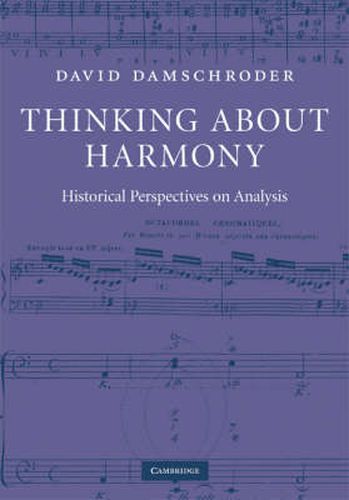Readings Newsletter
Become a Readings Member to make your shopping experience even easier.
Sign in or sign up for free!
You’re not far away from qualifying for FREE standard shipping within Australia
You’ve qualified for FREE standard shipping within Australia
The cart is loading…






Focusing on music written in the period 1800-1850, Thinking about Harmony traces the responses of observant musicians to the music that was being created in their midst by composers including Beethoven, Schubert, and Chopin. It tells the story of how a separate branch of musical activity - music analysis - evolved out of the desire to make sense of the music, essential both to its enlightened performance and to its appreciation. The book integrates two distinct areas of musical inquiry - the history of music theory and music analysis - and the various notions that shape harmonic theory are put to the test through practical application, creating a unique and intriguing synthesis. Aided by an extensive compilation of carefully selected and clearly annotated music examples, readers can explore a panoramic projection of the era’s analytical responses to harmony, thereby developing a more intimate rapport with the period.
$9.00 standard shipping within Australia
FREE standard shipping within Australia for orders over $100.00
Express & International shipping calculated at checkout
Focusing on music written in the period 1800-1850, Thinking about Harmony traces the responses of observant musicians to the music that was being created in their midst by composers including Beethoven, Schubert, and Chopin. It tells the story of how a separate branch of musical activity - music analysis - evolved out of the desire to make sense of the music, essential both to its enlightened performance and to its appreciation. The book integrates two distinct areas of musical inquiry - the history of music theory and music analysis - and the various notions that shape harmonic theory are put to the test through practical application, creating a unique and intriguing synthesis. Aided by an extensive compilation of carefully selected and clearly annotated music examples, readers can explore a panoramic projection of the era’s analytical responses to harmony, thereby developing a more intimate rapport with the period.